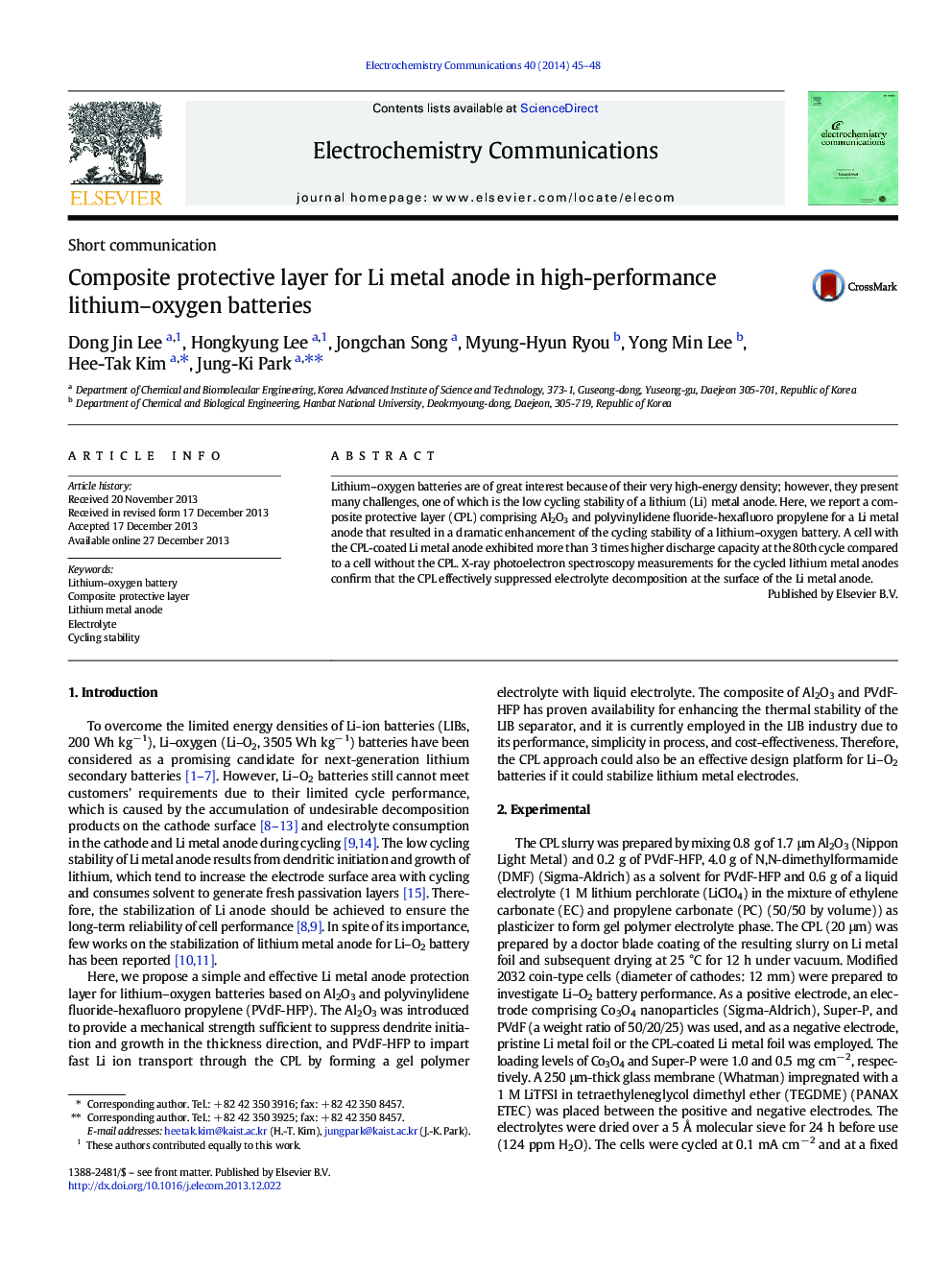| Article ID | Journal | Published Year | Pages | File Type |
|---|---|---|---|---|
| 179059 | Electrochemistry Communications | 2014 | 4 Pages |
•Composite protective layer (CPL) was introduced at the Li surface in Li–O2 battery.•The CPL suppresses electrolyte decompositions at the Li metal surface.•The CPL significantly improves the cycling stability of Li–O2 battery.•The CPL can be an effective design platform for high-performance Li–O2 batteries.
Lithium–oxygen batteries are of great interest because of their very high-energy density; however, they present many challenges, one of which is the low cycling stability of a lithium (Li) metal anode. Here, we report a composite protective layer (CPL) comprising Al2O3 and polyvinylidene fluoride-hexafluoro propylene for a Li metal anode that resulted in a dramatic enhancement of the cycling stability of a lithium–oxygen battery. A cell with the CPL-coated Li metal anode exhibited more than 3 times higher discharge capacity at the 80th cycle compared to a cell without the CPL. X-ray photoelectron spectroscopy measurements for the cycled lithium metal anodes confirm that the CPL effectively suppressed electrolyte decomposition at the surface of the Li metal anode.
Graphical abstractFigure optionsDownload full-size imageDownload as PowerPoint slide
